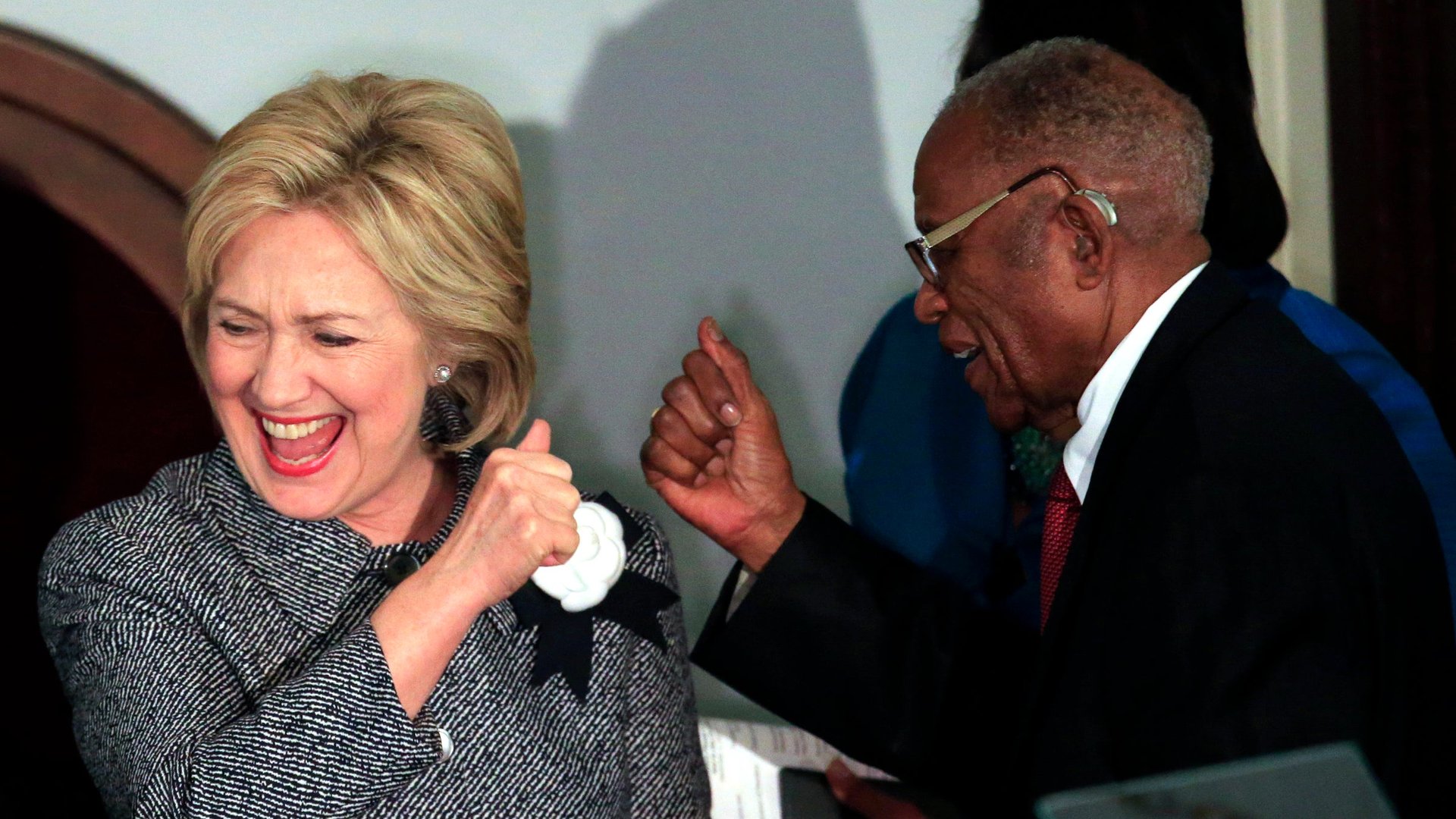Hillary Clinton is still “likable enough”—as are most major candidates in the field
In the run-up to the 2016 US presidential election, there are two races: The one you see in the media, and the one poorly defined by an inchoate electorate, two-thirds of whom are likely to wait until a month before Election Day to make up their minds about who to support.


In the run-up to the 2016 US presidential election, there are two races: The one you see in the media, and the one poorly defined by an inchoate electorate, two-thirds of whom are likely to wait until a month before Election Day to make up their minds about who to support.
The two are ostensibly connected via frequent public opinion surveys; a recent one from Quinnipiac University shows Democratic frontrunner Hillary Clinton with a comfortable 30-point lead over senator Bernie Sanders, and Donald Trump holding strong on the Republican side with support from 27% of the registered primary electorate, followed by senator Marco Rubio with 17%. Both Democrats beat the top Republicans in head-to-head general election match-ups.
Looking beyond electoral support, at voters’ opinions of the candidates, can be helpful to understand what they’re telling the pollsters. Here is the breakdown in favorability ratings for the current crop of candidates, arranged in order of net favorability:
Sanders has the highest net favorables of any candidate on the list; only Clinton has the same level of appreciation, but there are a lot more people out there with unfavorable views of her. (Only Trump and Jeb Bush are more deeply disfavored.) And nearly everyone has an opinion about Clinton compared to most candidates; only Trump comes close to her for the fewest number of voters who say they don’t know enough to weigh in, reflecting the Democrat’s many years in the national spotlight as a diplomat, senator, and first lady, and the media’s nonstop coverage of the Republican politician unafraid to offend anyone.
So, how come Sanders hasn’t capitalized on his massive advantage in favorability over Clinton? One answer is partisan politics: A lot of the Clinton hate comes from the other side of the aisle. Despite—and perhaps because of—the fact that Clinton’s record is more centrist than that of the Vermont senator, she remains far more favored than he in Democratic precincts:
In Republican precincts, the kvetching of the party elite in Washington over the potential of a Trump nomination can be heard far and wide, and it’s easy to see why Marco Rubio is emerging as the establishment favorite: People just seem to like the charismatic young politician.
But fellow legislator Ted Cruz, despite the intense dislike (paywall) of his colleagues, remains a popular man among the Republican electorate, as does the irascible Trump, though he is far more polarizing even within his party than the candidates seen more favorably than he.
All of these early impressions are likely to prove fleeting. Political scientists argue that the favorability of an individual candidate tends to take the backseat to certain fundamental trends when it comes to deciding elections, particularly how the economy is performing and views of the incumbent’s record influence voters.
It is interesting to note that in the last decade of elections, every candidate arrived at the general election viewed favorably by more than 55% of US voters. None of the candidates would meet that standard now, but history leads us to expect favorable views to increase as we approach Election Day and voters convince themselves, under partisan influences, that, actually, they really do like this person on the ballot.
So despite mock concern about Clinton’s likability—and how famously it backfired when then-candidate Barack Obama joked that she was “likable enough”—the reality is that she is; indeed, most candidates are. The bigger question is which party’s coalition of voters will be big enough, and enthusiastic enough, when it counts.